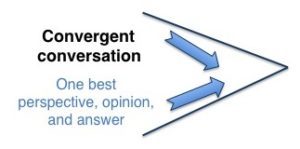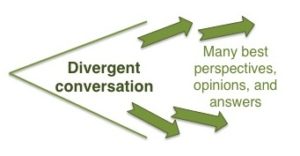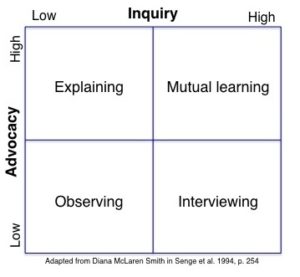24 Nov How to influence others
Late yesterday Bob, one of my high-flying clients in a listed corporation, called me in a perplexed state. He was wondering about how he could influence others when making decisions.
During the day he had landed in a near shouting match with his favourite direct report, and later with his boss, the chief executive, he had enjoyed ‘one of the best one-on-ones we have ever had’. In both conversations substantial decisions were scheduled for immediate action. Driving home, he couldn’t for the life of him understand why they felt so different, so he called me.
With Susan, Bob’s direct report, he simply couldn’t see why she didn’t agree with what he was explaining to her. Why couldn’t she see his analysis and plan were sound? All she had to do was get her team on board – and get on with it. She didn’t usually push back, so what was the problem this time?
He felt very different about his meeting with Simon, the CEO who has a pronounced ENTJ style, in Myers Briggs terms. Simon kept on asking questions and initially appeared to be putting a position. “At first it seemed he thought I wasn’t across the facts and was trying to impose his view. I felt like saying ‘Simon don’t you trust me with this?’ But I didn’t because he paused and remained silent, as though he was waiting for me to put my opinion on the table. And so I suggested two, even three, other ways of going forward. Simon responded with more questions and added new considerations. The pace was fast; it was a rapid-fire dialogue. It was two-way; it was immensely productive.”
Bob was perplexed by the difference in the two situations. Here’s why. He was missing a fundamental truth about all conversations: Seek to understand, before you seek to be understood [1]. In other words, you can’t listen without suspending your own judgement. You have first to hear if you want to be heard.
Bob told Susan what she should do
I explained, with Susan you kept telling her why you were right and what she should do. “Did you ask her what her thoughts were? Did you credit her with having an opinion on the risks and options? After all, I know you have the highest regard for Susan’s knowledge, smarts and judgement. You had formed your view, and you were not open to hers. You were unwilling toconsider alternatives. You thought you were right, and therefore Susan was wrong”. “Shit” he said, “I’m an idiot.”
Bob is certainly not an idiot. But he was making one of the oldest mistakes in the book. As the first diagram suggests he was conducting a convergent conversation. He believed there was one best way forward – and all he had to do was persuade Susan. Wrong! I asked, “Is there really only one way forward? Could there be other, better ones? Did you actually stop to listen to Susan?” “No, I didn’t” he replied sheepishly.
In contrast, Simon asked for Bob’s view
I inquired, “Bob who learned more in the discussion with the CEO, you or Simon?” Bob hesitated. “We both learned – a lot. Including about each other. Not just the situation and the decision.”
“Why do you think that it was so different when you and Simon were together in contrast with you and Susan?
“Mmm. I guess Simon and I looked at all options. We both spent time reflecting. We didn’t jump to immediate conclusions or action. At first, I didn’t feel heard, then Simon said ‘How do you see it Bob?’ And I opened up.”
“That led to other ideas. I am not even sure who said what. It didn’t matter. Simon kept on widening the conversation. He usually just cuts to the chase, but today he really listened to me.”
Bob and Simon engaged in a divergent conversation, led by Simon’s skill in conducting a
productive discussion. Simon used silence to engage Bob. “Bob I suspect you felt respected and safe with Simon?” I asked. “Yes, and as result I shared my ideas, one of which was left field.” “Is that how it truly was?” “Absolutely; it was great!”
“And, you know what, I now realise something else”, said Bob. “Simon was not pushing for a decision until we both felt ready. I knew he was stressed for time, yet he seemed to be there with me all through the meeting. I felt really good. It made me even more motivated.”
How to influence others by using advocacy and inquiry
As leaders, we make better decisions, resolve conflict, and influence others by engaging in dialogue that involves mutual learning, in other words, a combination of advocacy and inquiry [2].

Advocacy is stating one’s views. Forms of advocacy include describing what you think, disclosing how you feel, expressing a judgement, urging a course of action, and issuing an instruction.
Whereas inquiry is asking a question. Forms of inquiry include seeking information from others, and genuinely wanting to know how others feel or what they are thinking. Note, leading and rhetorical questions are forms of advocacy in disguise; they are not authentic inquiry.
Productive conversations – or true dialogue – occur when advocacy and inquiry are combined in a balanced and effective way. The 2 by 2 diagram indicates that high advocacy and high inquiry (the top right quadrant) result in mutual learning – a virtuous situation that maximises the probability of making better decisions, resolving conflict and influencing others.
Dialogue is creative (more ideas), applied (more likely to work in practice), and results in ownership (participants are fully invested in execution).
Being skilled in dialogue is essential to being an effective leader. By practising dialogue you get in touch with your own thinking and feelings. You learn to suspend judgement; that there is seldom clear right or wrong. You dig deeply into your own beliefs and assumptions about situations, people and their motives and competences. As your dialogue skills grow, your values, attitudes and beliefs about yourself and your relationships will shift. You will more readily influence others and make better decisions.
[1] A famous aphorism of Stephen Covey’s in Seven Habits of Highly Effective People.
[2] This diagram and the next are taken from Dialogue: Rediscover the Transforming Power of Conversation by Linda Ellinor and Glenna Gerard. New York: John Wiley & Sons 1998, p. 22


